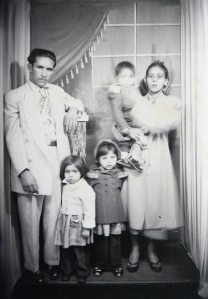In this blog entry, Gregory Kaliss, author of Men’s College Athletics and the Politics of Racial Equality writes about an infamous NCAA tournament game.
Next week, the Dallas metropolitan area will host the South regional of the men’s NCAA basketball tournament, the first time since 1994 that the area will host these later-round games. But many may not realize that the city’s involvement with the tournament has deeper roots, and one of the most famous—or, really, infamous—regional final weekends in tournament history took place in Dallas in 1957.
That year, the regional semifinals featured teams from Southern Methodist University, Oklahoma City University (OCU), St. Louis University, and the University of Kansas—whose star sophomore Wilt Chamberlain made the Jayhawks the odds-on favorite to win the national championship. There was only one problem for Chamberlain and his KU teammates—he and senior guard Maurice King were black in a region unaccustomed to hosting integrated sports competitions. The responses to the integrated KU team—from fans, opposing players, and the media alike—undermined the idea of sports providing a “level playing field” for racial equality.
The first sign of the team’s unwelcome came in the form of their housing—unlike the other teams, who stayed in downtown Dallas hotels, the Jayhawks booked rooms in Grand Prairie, where they took their meals in a private room because no restaurant would serve an integrated squad. Although Chamberlain, because of his celebrity, had been able to eat anywhere he liked in the still-segregated town of Lawrence, Kansas, racial lines mattered more in Texas.
The team’s reception on the court was even worse. In the team’s first game in Dallas, they struggled to a hard-earned overtime win over SMU, as a hostile crowd verbally abused the Kansas players and threw trash and other objects at them. According to Chamberlain, the fans “booed and jeered” and used a variety of derogatory terms, including “‘nigger’ and ‘jigaboo’ and ‘spook’ and a lot of other things that weren’t nearly that nice.” Pleased to escape with the win, which they earned in part because King had blocked a last-second shot in regulation, the KU players assumed the worst was over, since the hometown SMU team had been eliminated.
They were wrong. In fact, the team’s second game against OCU involved even worse crowd behavior. Dallas fans, outraged that an integrated team had defeated their school, switched allegiance to OCU and continued to taunt and harass the KU squad. To make matters worse, Oklahoma City coach Abe Lemmons and several of his players participated in the unruly behavior. Before the game, Lemmons warned referee Al Lightner that there would be problems “if that big nigger [Chamberlain] piles onto any of my kids.”
As Kansas pulled away to a convincing victory in the second half, the chaos became even more intense. Not even pleading from the SMU athletic director and other public officials could calm the outraged fans, who threw a variety of objects, including coins, paper airplanes, seat cushions, and food, onto the court. After the game, an armed cadre of police officers led the team off the court and traveled with them to the airport.
The media refrained from condemning, or even describing, these events. Hardly a word about the abuse suffered by Chamberlain and King made it into the press immediately following the contest. Acknowledgment of the game’s racial dynamics occurred only after the game’s referee, a resident of Oregon, complained about the racial epithets and violent behavior. But even then, most newspapers distanced themselves from the controversy, refusing to take a stand. In doing so, they prevented these sports contests from having larger meanings outside the arena; they did not use these games as opportunities to consider the many consequences of segregation and racism.
On the surface, the story of the 1957 Dallas regional final is a painful curiosity, a relic of a different era when Jim Crow reigned supreme. But the media silence surrounding the events is a reminder that silence can condone injustice, that dialogue is the first step towards creating social change. Sports can bring out the worst in us, as the response to the Jayhaws shows, but if we encourage meaningful dialogue when we talk about sports, they can also bring us together. Let us hope for that outcome, no matter the teams in the upcoming tournament.
Filed under: african american studies, american studies, Education, race and ethnicity, sociology, sports | Leave a comment »












